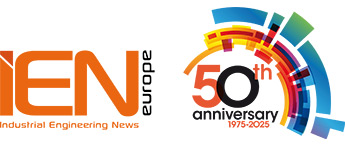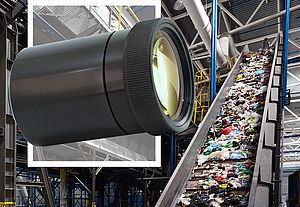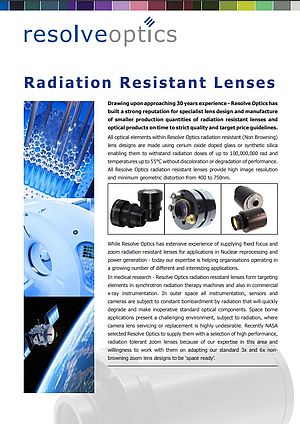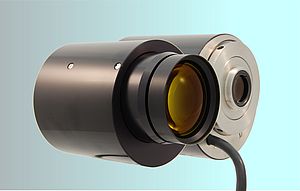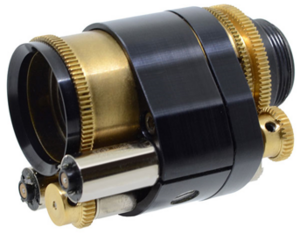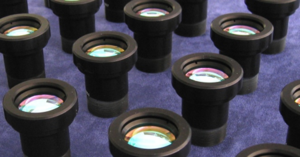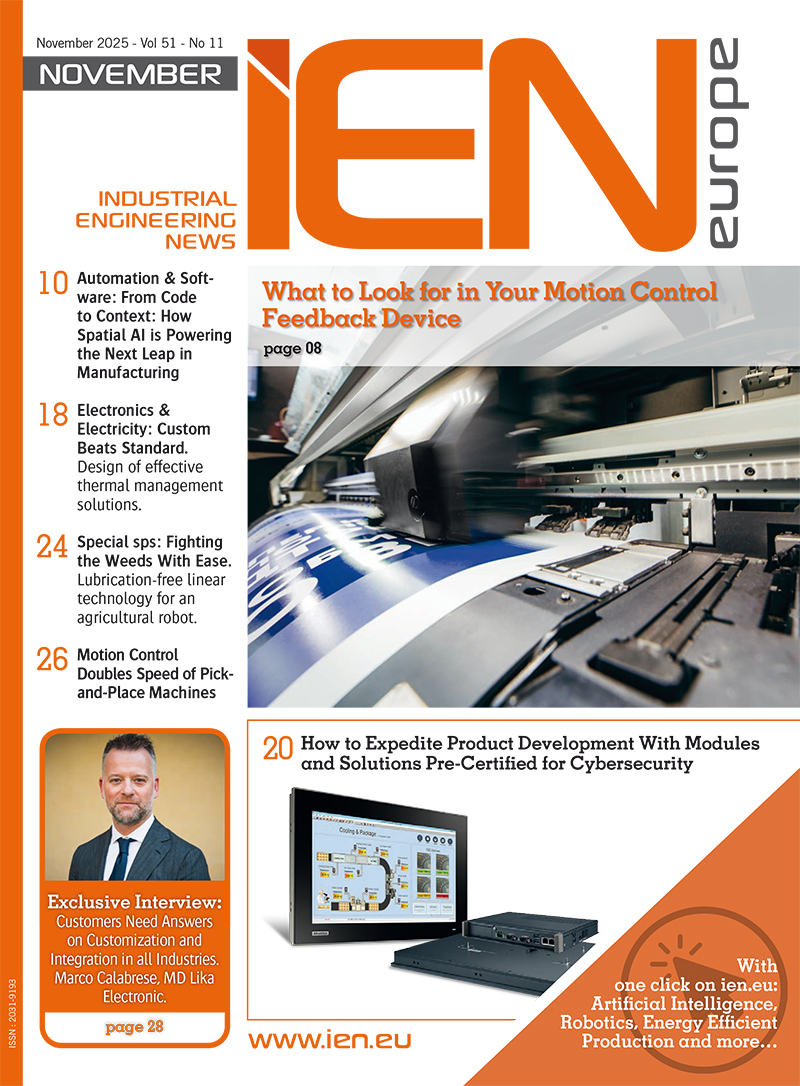IEN Europe: Can you please give us a an introduction to Resolve Optics and what you do?
Rob Watkinson: For over 20 years we have specialized in the design and manufacture of small to medium sized batches of custom optics for camera, sensor and instrumentation companies. Customers will approach us for a number of reasons; this could be to replace an obsolete lens or it could be that they are faced with an application requiring something a little more demanding. This could be an optical requirement such as high performance, bandwidth or a non-standard image format or it could be a mechanical requirement such as ruggedization. We pride ourselves on being able to take the customer specifications and provide them with rough order of magnitude costs in typically just 1-2 weeks. All component manufacture is then subcontract manufactured to our drawings before being brought back in-house to be fully assembled and tested.
EN Europe: Your customers come from a broad range of sectors including the scientific community. Can you give us some examples of scientific sector challenges you have helped solve, as this is a very broad field?
Rob Watkinson: Most of the projects that we work on are covered by a non-disclosure agreement as many of the lenses we design provide our customers with a competitive edge. In the scientific sector we have worked on supplying key optics for high-speed imaging, forensic, healthcare and space applications. An example I can share with you comes from the healthcare field. As increasing numbers of people require radiotherapy as a key part of their cancer treatment, there is a need for treatment delivery systems that can deliver precise and accurate care quickly. A leading radiotherapy equipment supplier sought a high-resolution lens able to withstand, and precisely focus, the high levels of radiation produced by their synchrotron device onto tumors. Using cerium-doped glasses, we designed and produced a compact f/2.8, 24mm fixed focus lens able to maintain performance up to an accumulative dose of up to 100 million rad. This new lens is enabling the supplier to improve the precision radiotherapy treatment of tumors that its equipment provides.
IEN Europe: In what way are the challenges in the scientific field different from the challenges faced by your industrial customers?
Rob Watkinson: In terms of optical design the scientific field does not necessarily present any different challenges to applications in any other sector. The challenges of designing an optimized lens tend to be the same no matter its target application unless the requirement is for something particularly new or challenging. Because of their decades of experience our team of optical designers are able to quickly gain an understanding of the basic physics of the technology associated with each customer’s target application enabling us to propose novel optimized solutions. Regular communication is maintained with customers at all points of development to ensure complete satisfaction with the final lens or optical system.
IEN Europe: On the face of it, bespoke sounds expensive compared to off-the-shelf lenses. What facts and considerations can be used in reassuring budget holders?
Rob Watkinson: A bespoke (custom designed) lens is going to be more expensive than an off-the-shelf solution though is often not as pricey as people might initially expect. As part of our initial review of a new customer enquiry we will check if there is an existing suitable lens available off-the-shelf. If there is, we will always direct the customer towards that option. Where Resolve Optics can add real value, is when there is no off-the-shelf solution available, or you need something a little different from your lens. This could be an optical requirement such as operation at a particular bandwidth, matching an unusual sensor format or a mechanical requirement such as ruggedization. In such cases the additional cost of a bespoke lens design is typically far outweighed by getting the exact lens you need for your product or to get the results you seek from a challenging application.
IEN Europe: What are the typical steps from an enquiry to delivering the final customised lens? How long does the whole process normally take and how much of the work is done in-house at Resolve Optics?
Rob Watkinson: When we receive a new enquiry our design team will look it over to determine feasibility and gauge exactly what would be involved. Once this is completed, we are able to supply the customer with estimate costing. Our aim is to get to this stage within 1-2 weeks though it is dependent on the complexity of the requirement. At this point we write up a final optomechanical design specification for both the customer and ourselves to agree and sign off on. It is very important to ensure this specification is correct and that it covers everything the customer needs as the lenses we supply will be guaranteed to meet what is detailed in this document.
Following the signed off specification, and the placing of an order by the customer, we finalize the design, create all the drawings, and then order the components. Once the components are delivered the lenses are assembled and then tested to ensure they meet the required specifications. Total lead time to delivery depends on the complexity of the lens, but for a simple fixed focus bespoke lens, you would be looking at around 5 months from order to delivery of the first batch.
IEN Europe: Coming back to scientific applications specifically: If somebody asked you about the coolest and the most useful or important applications your products are used for, what would you answer?
Rob Watkinson: As I mentioned previously, it is often not possible for us to talk about specific applications due to non-disclosure agreements with our customers. However, designing high performance optical systems for scientifically groundbreaking space projects is something ‘cool’ that we have been involved in for many years. Our lenses that are used in space applications have to meet certain basic requirements to survive the harsh environment of space. These lenses must be constructed of specific materials that will not outgas when exposed to the vacuum of space. All significant air spaces should be vented to avoid pressure on the elements and distortion of the lens. All materials right down to glues and greases must be approved and tested for outgassing. The orbit that our optical systems will be operating in determines how much radiation they have to withstand. All optical elements within our radiation tolerant lens designs are made using cerium oxide doped glass or synthetic silica enabling them to withstand radiation doses of up to 100,000,000 rad and temperatures up to 55°C whilst maintaining good performance. This is particularly important as swapping out a spaceborne lens would be an extremely large additional cost!
IEN Europe: Thank you for sharing these insights with us!
